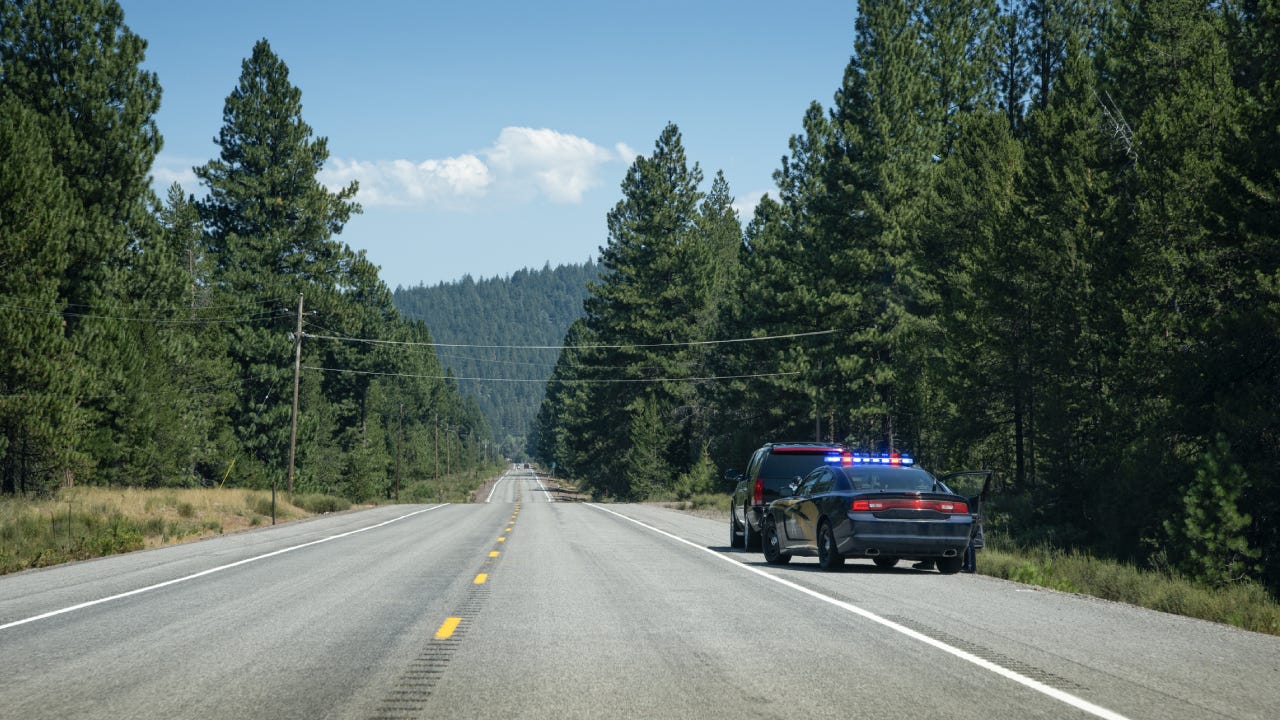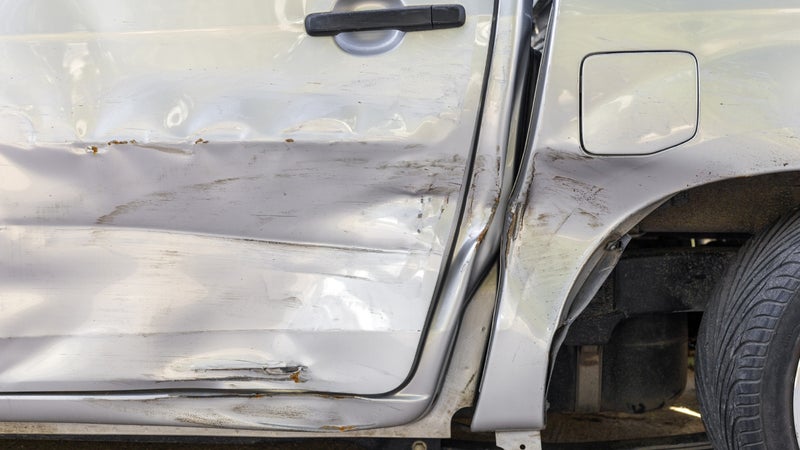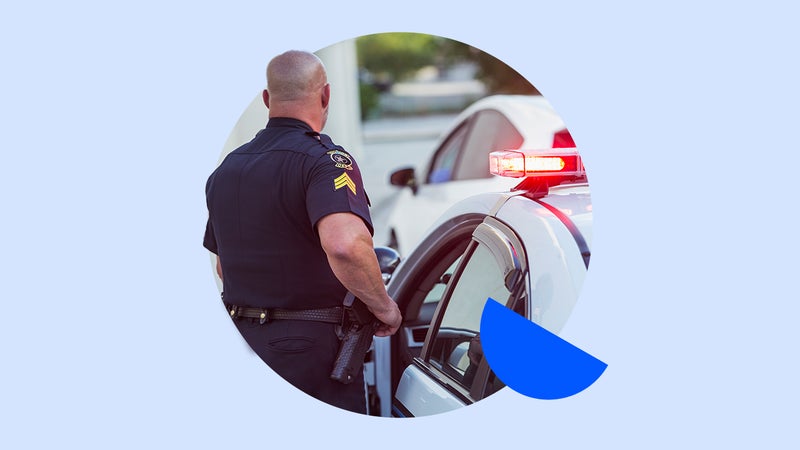Penalties for driving without insurance in Oregon

The Bankrate promise
At Bankrate, we strive to help you make smarter financial decisions. To help readers understand how insurance affects their finances, we have licensed insurance professionals on staff who have spent a combined 47 years in the auto, home and life insurance industries. While we adhere to strict , this post may contain references to products from our partners. Here's an explanation of . Our content is backed by Coverage.com, LLC, a licensed entity (NPN: 19966249). For more information, please see our .
In Oregon, driving without insurance is illegal and is likely to lead to undesirable outcomes. There are several penalties the state may impose on you, including fines and license suspension. You’re also likely to see higher average rates for your car insurance coverage than drivers with no infractions on their records. Bankrate’s insurance editorial team reviewed the laws in place in the Beaver State to help you understand what is required of you to drive legally, and what you may face if you are caught driving without insurance in Oregon.
Minimum insurance required in Oregon
Like many states, Oregon has minimum coverage insurance requirements. To fulfill this legal obligation, you must carry at least basic liability insurance to financially protect others should you cause an accident — this includes bodily injury liability and property damage liability.
Drivers must also purchase personal injury protection (PIP), which can help pay for medical expenses and more for you and your passengers, as well as uninsured motorist coverage, which could step in to cover damages should the at-fault driver be illegally driving without insurance.
To give you a complete sense of Oregon car insurance laws, please see the bulleted list below for the minimum amounts needed for each coverage type. However, it’s worth mentioning drivers with DUIs or other serious traffic violations on their records may be required to carry higher coverage limits.
- Bodily injury liability: $25,000 per person and $50,000 per accident
- Property damage liability: $20,000 per accident
- Personal injury protection: $15,000 per person
- Uninsured motorist: $25,000 per person and $50,000 per accident
Penalties for driving without insurance in Oregon
From receiving a ticket for no insurance to license suspension and vehicle impoundment, the penalties for driving without insurance in Oregon could be severe.
Fines
Oregonians caught driving without insurance may be subject to fines. Fines could be between $130 and $1,000, depending on the court’s decision.
Suspensions
Punishment for driving without insurance might also amount to a suspended driver’s license for up to one year, or until the driver obtains the required auto insurance and provides adequate proof of insurance. Registration for the vehicle may also be suspended, and the car may be impounded.
SR-22
If a driver’s license is suspended, they may be required to maintain an Oregon SR-22 form for three years after the incident. Insurance companies file these forms to provide proof of coverage for high-risk drivers.
Fees
When driving without insurance, Oregon drivers should be aware that fees are typically charged for reinstating a license, filing SR-22 forms, verifying insurance, retrieving a vehicle from impoundment and reinstating registration. However, drivers will only have to pay the fees that apply to their incident.
Financial obligations
If an uninsured driver is at fault in an auto accident, the other driver may sue them to pay for the financial damages that they caused.
Getting into an accident without insurance in Oregon
In Oregon, driving without insurance can result in complicated situations. If the other driver has personal injury protection or uninsured/underinsured motorist coverage, it could pay out to help cover their costs. However, if you are driving without insurance, the other driver could also choose to sue you for injuries and damages caused, court costs, wage garnishments and more.
In addition, you could face legal penalties for driving without insurance, including license suspension, fines and getting a ticket for no insurance. Plus, the state will typically require you to carry an SR-22 form that your insurance company files with the state to prove that you have car insurance.
Frequently asked questions
-
-
Providing falsified information as proof of insurance could lead to an immediate license suspension and potentially worse consequences. Driving without auto insurance is often considered a misdemeanor, but lying to the state about proof of insurance may be punishable as fraud.
-
The average cost of auto insurance in Oregon as of April 2024 is $1,877 annually for full coverage and $773 for minimum coverage. By comparison, the average cost in the U.S. is $2,314 annually for full coverage and $644 for minimum coverage. Your own rate is likely to differ from the average, since it is based on a range of factors that are unique to you and your situation. To find the best car insurance company for your needs, shop around and ask for quotes from more than one carrier, so you get a sense of which insurer can offer you the cheapest rate.
-
While the state minimum is all that is required by law, many people choose to purchase more coverage. But knowing how much auto insurance you need may be tricky. All insurance policies have coverage limits, or an amount up to which you can receive a claim payout. For those concerned that the costs of an accident could exceed their insurance limits, extra coverage may be beneficial. Experts recommend seeking advice from an insurance agent to make sure you’re adequately covered.
-
Depending on the person’s auto insurance company and policy, you may be covered if you are listed as a driver on their auto insurance policy. However, this is not always the case and there are often limitations. Thankfully, there are policies designed for this situation called non-owner car insurance policies. In situations where you regularly use another person’s vehicle, this may be more feasible than being added to their policy.
-
There’s no single company that is always the best option for drivers who have had a lapse in car insurance coverage. Finding the best rate may mean shopping around, and that might include looking at insurers who offer insurance to high-risk drivers. The best car insurance company for you is likely to be the one that offers the most affordable rate, along with solid customer service and the range of options and discounts that works best for your needs. Asking for quotes from a handful of likely insurers may be the best way to find the company that is most willing to write you a policy that’s easy on your wallet.
-



